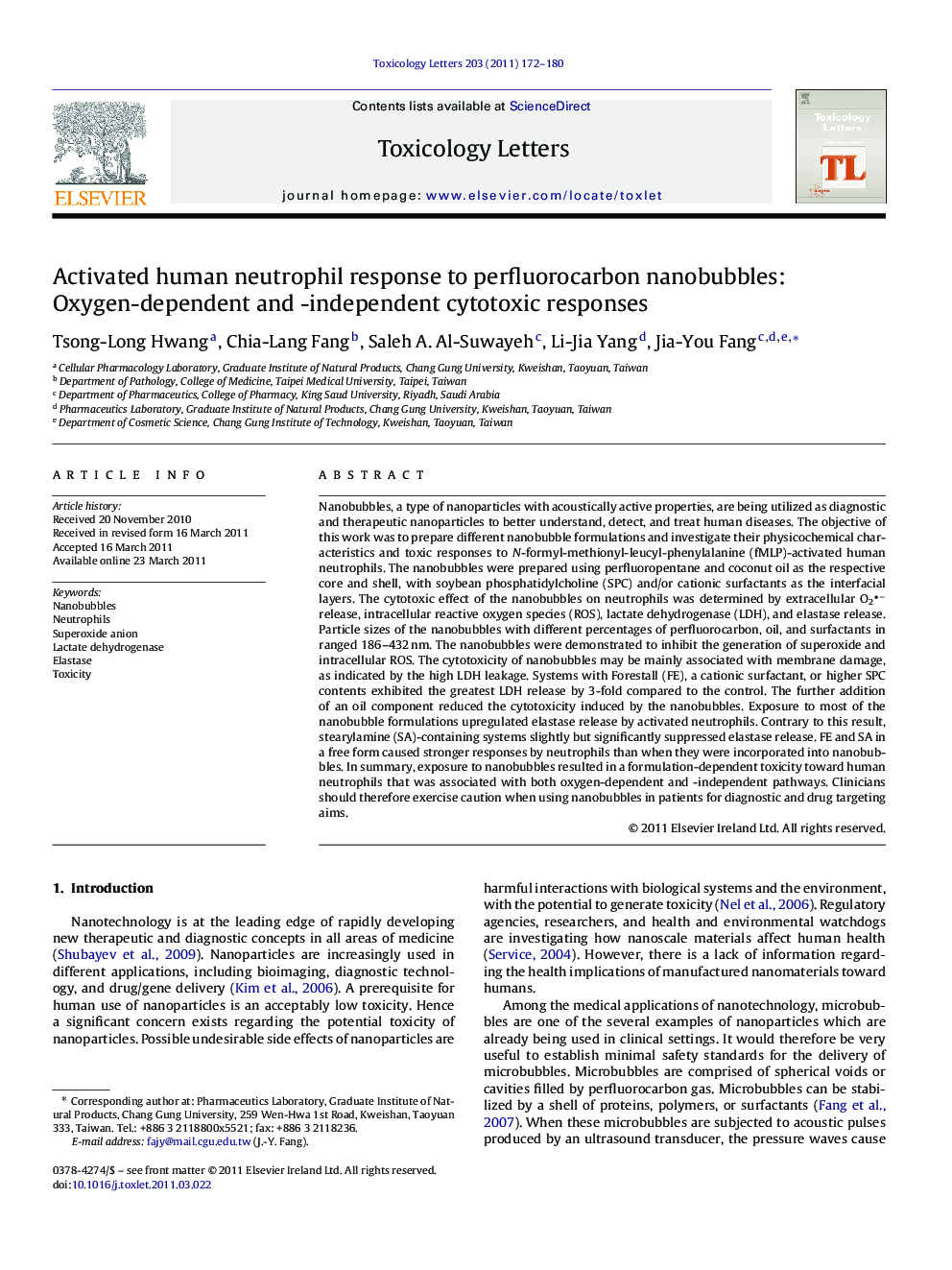| کد مقاله | کد نشریه | سال انتشار | مقاله انگلیسی | نسخه تمام متن |
|---|---|---|---|---|
| 2600126 | 1133255 | 2011 | 9 صفحه PDF | دانلود رایگان |

Nanobubbles, a type of nanoparticles with acoustically active properties, are being utilized as diagnostic and therapeutic nanoparticles to better understand, detect, and treat human diseases. The objective of this work was to prepare different nanobubble formulations and investigate their physicochemical characteristics and toxic responses to N-formyl-methionyl-leucyl-phenylalanine (fMLP)-activated human neutrophils. The nanobubbles were prepared using perfluoropentane and coconut oil as the respective core and shell, with soybean phosphatidylcholine (SPC) and/or cationic surfactants as the interfacial layers. The cytotoxic effect of the nanobubbles on neutrophils was determined by extracellular O2− release, intracellular reactive oxygen species (ROS), lactate dehydrogenase (LDH), and elastase release. Particle sizes of the nanobubbles with different percentages of perfluorocarbon, oil, and surfactants in ranged 186–432 nm. The nanobubbles were demonstrated to inhibit the generation of superoxide and intracellular ROS. The cytotoxicity of nanobubbles may be mainly associated with membrane damage, as indicated by the high LDH leakage. Systems with Forestall (FE), a cationic surfactant, or higher SPC contents exhibited the greatest LDH release by 3-fold compared to the control. The further addition of an oil component reduced the cytotoxicity induced by the nanobubbles. Exposure to most of the nanobubble formulations upregulated elastase release by activated neutrophils. Contrary to this result, stearylamine (SA)-containing systems slightly but significantly suppressed elastase release. FE and SA in a free form caused stronger responses by neutrophils than when they were incorporated into nanobubbles. In summary, exposure to nanobubbles resulted in a formulation-dependent toxicity toward human neutrophils that was associated with both oxygen-dependent and -independent pathways. Clinicians should therefore exercise caution when using nanobubbles in patients for diagnostic and drug targeting aims.
Journal: Toxicology Letters - Volume 203, Issue 2, 10 June 2011, Pages 172–180